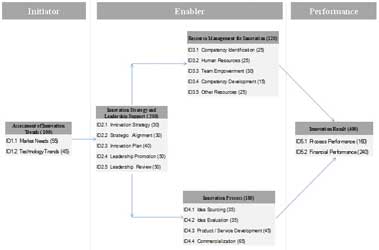THANK YOU FOR SUBSCRIBING

Monetising Innovation
Gautam Borah, VP Customer Operation, Vodafone, Author of the Book Monetising Innovation


Gautam Borah, VP Customer Operation, Vodafone, Author of the Book Monetising Innovation
480 AD, Dalmatia
The sky was shimmering with tinges of orange flickering in irregular patches. The Dinaric Alps stretching in miles across the Adriatic Sea was looming large like a sentinel through eons. It was not far away, where Julius Nepos, the Roman Emperor of the west was strolling at a rapid pace on the parapet of the fortification. The scouts have just informed that, Odoacer, the head of the Germanic Foederati with his army is only few miles away.
Nepos slowly glanced back at his palace constructed by his ancestors centuries ago ‘I would be back, I will reclaim you very soon.’ However, little did he imagine that his would be the last hands to clasp the scepter of the Roman Empire passed from Caesar to Octavian and through the glorious ages of PaxRomana or the Roman peace.
He never knew, later in the history, this would go down as the end of the Roman Empire of the West and he as the last Roman Emperor!
Rise and Fall of Empires
From the Roman Empire to the likes of Pan Am World Airways, there are umpteen examples of fall of the high and mighty all throughout the human history, from the biggest of the empires to the mightiest of the corporations.
Much has been written on the reasons, many hypotheses will still be formed; however, delving deeper leads to the only one reason—their rate of innovation was not synchronous with what was exacted by the changing environment. In simpler words–they fell because they failed to innovate.
Innovation is so near yet so far
The subject of Innovation is protean, and so are its various notions. Innovation, as viewed by Porter is, ‘A new way of doing things (termed innovation by some authors) that is commercialized.’ The OECD Oslo Manual has defined innovation as, ‘the implementation of a new or significantly improved product (good or service) or process, a new marketing method, or a new organizational method in business practices, workplace organisation, or external relations.’ My book Monetizing Innovation perpends innovation from the perspective of business results and has defined it by the following simple equation referred to as the Innovation Equation:
Innovation = Creation + Commercialization + Business Result
However, what is perplexing here is, if innovation is so simple to create and invoke results, why do high and mighty like Roman Empire and Pan Am World Airways fall from grace? This reminds me exactly one of Aesop’s famous fable:
A Fox Dilemma
During one of his sojourns to the neighborhood jungle, this worldly cat happened to meet a contemptuous fox, who was known for his artful exploits in many skills.
Unless equipped with a structured approach, the woe of driving innovation in a firm more often than not starts right here. The Fox Dilemma of being confused with too many options or the wrong option surfaces every time one contrives an initiative on innovation. This has become more and more defining in the context of the current business environment. Current business environment entails a Structured Approach to Innovate. Just following few statistics amply characterize the current business environment: According to Global Digital Suite Report, in a global population of 7.5 billion, there are 5.1 billion mobile users, 4.0 billion Internet Users and 3.2 billion Social Media Users. As mentioned in an article in Engadget, Internet Speed has improved by more than 30 percent in last couple of years.

In such an environment defined by Connectedness and Speed, business innovation doesn’t happen by chance. It imperatively calls for a structured approach, one crafted either by a conscious design, or that is underlying the visible layers of a company due to the way it works. In this context, a pragmatic and structured framework like ICaM (Innovation Capability Model) can act as an ameliorative for business managers to drive innovation in a firm.
ICaM – Innovation Capability Model
ICaM comprises five basic axioms (Referred as Cluster) that an organization needs to focus to drive result oriented innovation. ICaM framework is shown in the following figure. The axioms are arranged in groups of Initiator, Enabler and Performance.
Each Cluster comprises Innovation Drivers. There are 18 Innovation Drivers in total. Each Innovation Driver has been assigned certain numerical weights (Shown in brackets)
This axiom depicts the requirements a business firm needs to assess, with respect to current trends in innovation, prior to strategy formulation. Numerical significance of the cluster is 100, and there are two Innovation Drivers.
Innovation Strategy and Leadership Support
Innovation strategy and leadership support defines what a business firm needs to focus with respect to defining the strategy to drive innovation, as well as the kind and degree of support by senior leadership. Numerical significance of 200 is distributed across five Innovation Drivers.
Resource Management for Innovation
Management of resources, both human and other resources, while driving innovation, is construed in here. Five Innovation Drivers constitute this axiom, with a numerical significance of 120.
Innovation Process
A structured process that a business firm can adopt to drive innovation is the focal point of this cluster. There are four Innovation Drivers, with a total numerical significance of 180.
Innovation Results
It is vital to link the innovation efforts with business results, and this cluster sketches out various metrics for it. A numerical significance of 400 is assigned with two Innovation Drivers.
Driving Innovation is like preparing a gourmet cuisine – when many people may use the same recipe; the tastes are never the same. While ICaM can provide the right ingredients and the right path to stay relevant, it further entails consistent effort, smart work and being creative beyond a boundary. It’s about embracing the new as in Emily Dickenson’s poem A Light exists in Spring:
A Light Exists in Spring Not present on the year At any other period When March is scarcely here.
Weekly Brief
I agree We use cookies on this website to enhance your user experience. By clicking any link on this page you are giving your consent for us to set cookies. More info
Read Also










.jpg)

